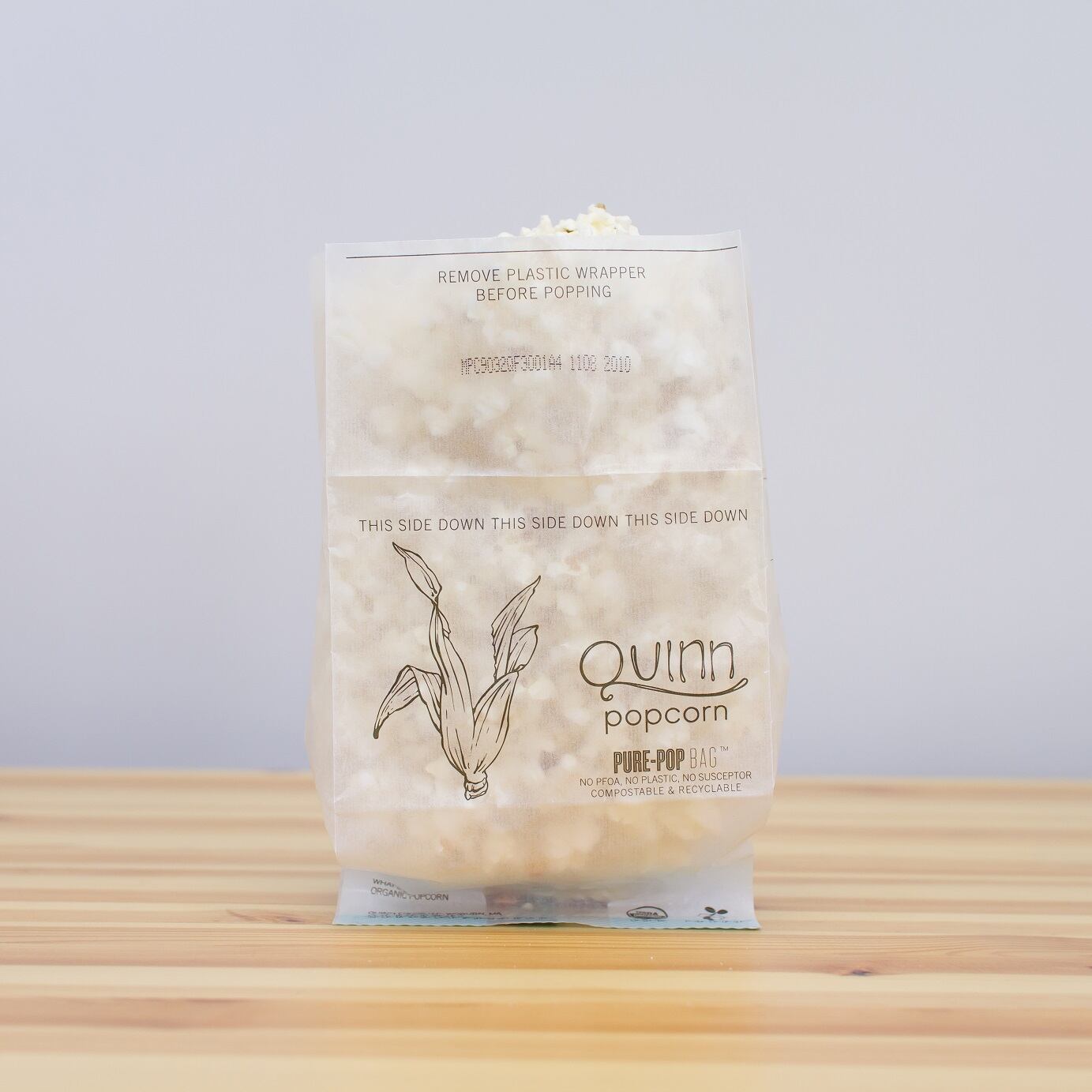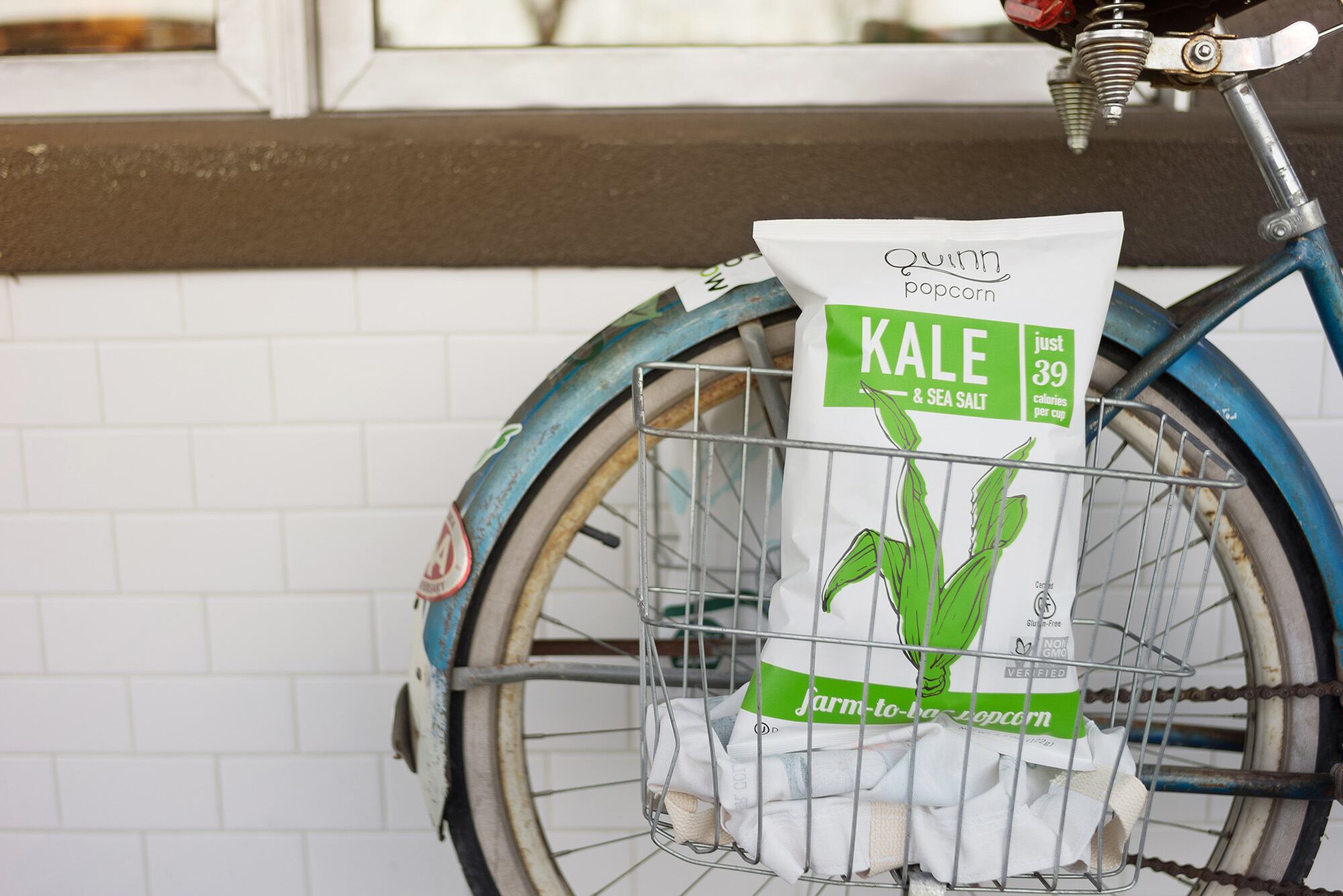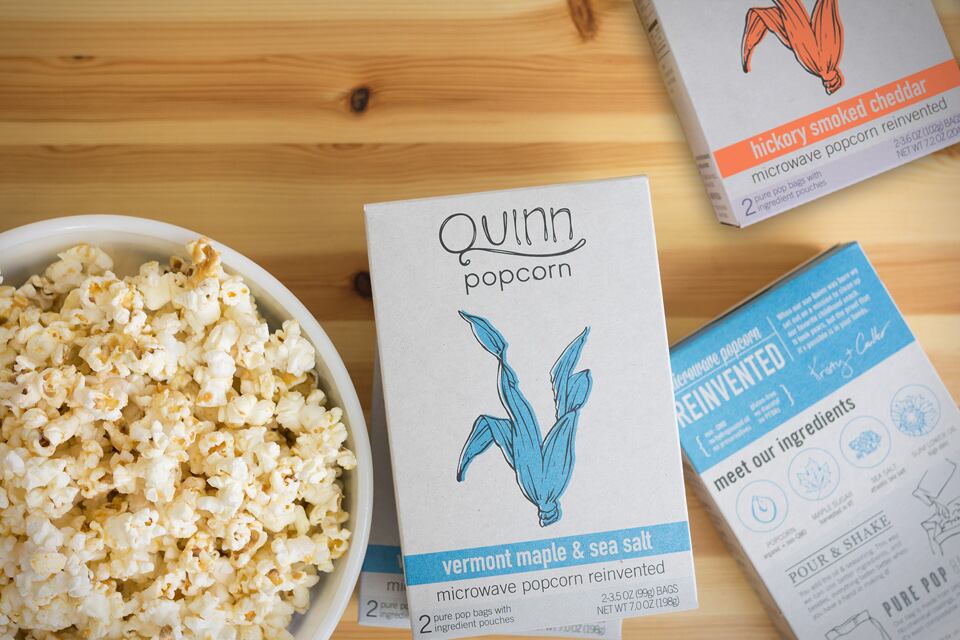
So she and her husband Coulter founded Quinn Popcorn, a non-GMO, organic microwave popcorn brand in 2011, as a means to clean up the category. Almost three years later, Boulder-CO-based Quinn (named after Lewis’ son) has just launched a ready-to-eat popcorn line and is aiming for profitability, a tough prospect when the path to scaling up is paved only with organic, non-GMO ingredients. And inevitably, with such lofty goals in mind, the business has become about much more than just popcorn.
“So, we’re not profitable, I will tell you that,” Lewis told FoodNavigator-USA. “It’s something we don’t hide. The good thing though is we grew over three times this year with sales. More and more people are becoming aware of what we are trying to do!
“Consumers should know what they’re purchasing and where it’s coming from. That was the whole genesis for this. In order to change the food industry, you have to be a little idealistic. You need to have those dreams because a lot of people say it is impossible.”
Microwave popcorn: the iconic, stagnant American snack
But it started with Lewis’ longtime love affair with what she calls the iconic American snack: microwave popcorn—a category dominated by a few longtime, big brands that has seen very little in the way of shakeups.
“Everyone was eating microwave popcorn when I was a kid. I loved it. Then in my 20s, I couldn’t believe it hadn’t evolved yet. There were still the same chemicals in the bag that leech onto the kernels; it was still made with hydrogenated oils and the same stale ingredients. How are we still eating this, more importantly, feeding it to our kids? I wanted to clean up microwave popcorn. So, I had the idea of taking everything out and getting back to basics.”

It took a year to develop the product, half of which was spent finding an organic corn supplier. Quinn finally settled on Grain Place Foods, a third-generation non-GMO and organic corn grower from Nebraska where it still gets all its corn. But the biggest challenge was making a “clean” bag, in other words, free of chemicals such as PFOA and PFCs and plastic liners.
“We were the first—and still the only—in the market to use a compostable bag. We tried to strip the bag of everything, even the susceptor [gray metal/plastic patch]. But finding a paper supplier that could verify not adding anything took months.”
Also challenging was working with a co-packer at minimal volumes starting out, particularly because Quinn uses expeller-pressed sunflower oil (as opposed to the typical chemically-based solvent extraction process), which is packed in separate pouches from the other ingredients, so the consumer can see it.
The consumer knows as much as we know
Quinn launched its microwave popcorn in three Whole Foods stores in the North Atlantic region in 2011. Flavors—“also aiming for getting back to basic”—include butter & sea salt, Vermont maple & sea salt, just sea salt, parmesan rosemary, hickory-smoked cheddar and olive oil & herbs. The box is vertically oriented, which also differentiates it from the traditional, horizontal orientation of most brands.
“They flew off the shelves,” Lewis said. “It really resonated.”
Within a few months, distribution climbed to 12 stores, then across the whole region. Now Quinn microwave popcorn is in almost 3,000 stores nationwide.
Farm-to-bag challenges other manufacturers to open up the supply chain
In January 2014 Quinn debuted its farm-to-bag, ready-to-eat popcorn in kale & sea salt and cheddar & chipotle varieties—once again, with a somewhat idealist, bigger-than-popcorn goal in mind.
“For RTE, we’re trying to change the way companies source ingredients, and the farm-to-bag initiative challenges others to do what we are doing. Opening up their supply chain.” Lewis said.

Each bag of Quinn RTE popcorn contains a batch number that consumers can plug into the company’s website to see where each ingredient came from. The corn, for example, comes from one of 150 farms across three states. As the company grows, it will eventually contract out the seed directly to farmers and list those farmers on the label.
“As much as we know, the consumer will know,” she said. “Grilling suppliers for information down to the tiniest detail drives them crazy, but it’s necessary. We want the food industry to open up and change. If more people ask questions, suppliers will get more fanatical about how they grow and manufacture their ingredients. That’s the essence of this whole thing.”
Still, she says, a lot of manufacturers don’t want to open up for the reason that many organic supply chains are less secure than their conventional counterparts. “A lot of people don’t want to open up, and I get that. Our cheese supplier is very limited on organic cheese. Someone called me and asked where we’re getting our organic cheese. I answered, ‘I don’t want to tell you but I have to!’”
Indeed, the skyrocketing price of dairy (coupled with the added expense of sourcing organic), has made scaling up difficult, requiring Quinn to work with multiple suppliers and make some sacrifices. “” Lewis said, adding that it’s a work in progress. “We can’t afford to buy $14-a-pound pound organic Parmesan, so we buy the $7 non-organic, rbGH- free Parm from Kentucky. It’s a sacrifice. But I figure the more we get people thinking about it, the more people will require organic dairy, and it will eventually drive the cost down.”
Lewis has a similarly optimistic, supply/demand-driven view of the market for non-GMO. Indeed, both of Quinn’s RTE bags are non-GMO verified and the brand is working its way toward becoming completely Non-GMO Project certified, though, like organic, it’s a work in progress. “I am a huge advocate of The NON-GMO Project and the Right to Know campaign. Realizing it's hard for small companies to make the switch, it is very important to me, and for the food industry to move in this direction,” she added.

Organic, non-GMO popcorn for the mass market
It all comes down to offering consumers a choice. Indeed, although the brand initially targeted the natural foods channel, Lewis’ goal is to get the product into everyone’s hands. “We would like to be in the HEBs and Krogers of the world. Having Quinn accessible to both conventional and natural channels. Eventually getting down to a price point so consumers don’t have to make their choice based on cost. A challenge that so many organic and non-GMO companies our size are facing.”
Still, organic and non-GMO brands like Nature’s Path, Organic Valley and Annie’s have broken through the mass channel, with many securing wide distribution in major national supermarket chains, Walmart, Target and Costco. And with that, they’re bringing more awareness to the mainstream consumer.
“Our hope is that we can go along with [Nature’s Path and Annie’s] and other small food companies, and push our food industry into becoming honest, clean and open,” Lewis added. “The more press that non-GMO vs. GMO, and conventional vs organic receives, the more demand there will be for it. In the years to come I hope 50 to 75% of grocery stores will become non-GMO and organic. GMOs will hopefully become the minority.”
Sound a little idealistic?
“I know and believe we can get there.” Lewis said.
